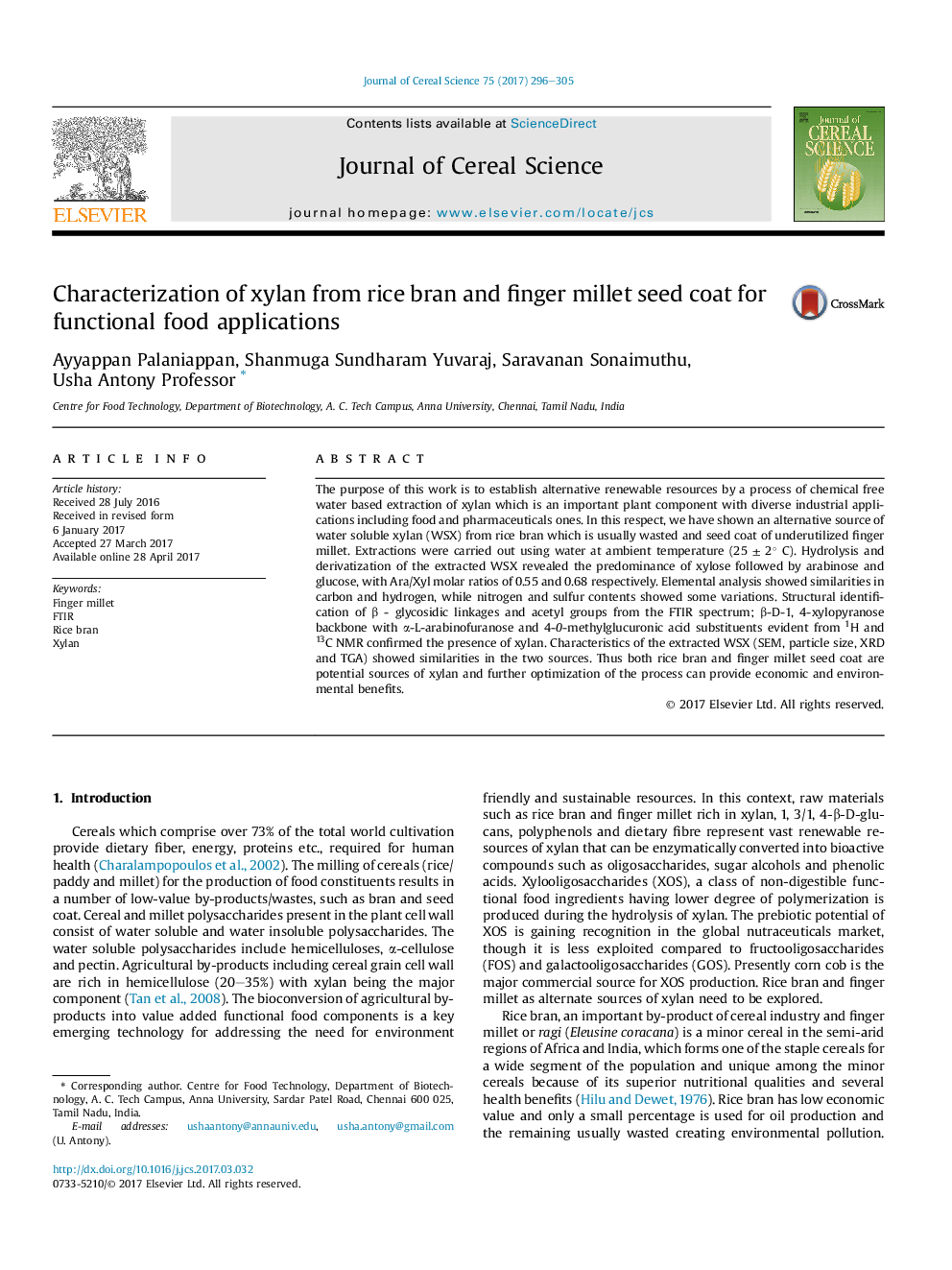| Article ID | Journal | Published Year | Pages | File Type |
|---|---|---|---|---|
| 5762383 | Journal of Cereal Science | 2017 | 10 Pages |
â¢Water extraction of xylan from rice bran and finger millet seed coat.â¢Xylose was predominant with ara/xyl ratio of 0.55 and 0.68.â¢FTIR and NMR spectra confirmed the β-glycosidic linkages in the extracted xylan.â¢The extracted xylan were amorphous (SEM and XRD) and thermostable (TGA).â¢The extracted xylan could be suitable substrates for XOS production.
The purpose of this work is to establish alternative renewable resources by a process of chemical free water based extraction of xylan which is an important plant component with diverse industrial applications including food and pharmaceuticals ones. In this respect, we have shown an alternative source of water soluble xylan (WSX) from rice bran which is usually wasted and seed coat of underutilized finger millet. Extractions were carried out using water at ambient temperature (25 ± 2° C). Hydrolysis and derivatization of the extracted WSX revealed the predominance of xylose followed by arabinose and glucose, with Ara/Xyl molar ratios of 0.55 and 0.68 respectively. Elemental analysis showed similarities in carbon and hydrogen, while nitrogen and sulfur contents showed some variations. Structural identification of β - glycosidic linkages and acetyl groups from the FTIR spectrum; β-D-1, 4-xylopyranose backbone with α-L-arabinofuranose and 4-0-methylglucuronic acid substituents evident from 1H and 13C NMR confirmed the presence of xylan. Characteristics of the extracted WSX (SEM, particle size, XRD and TGA) showed similarities in the two sources. Thus both rice bran and finger millet seed coat are potential sources of xylan and further optimization of the process can provide economic and environmental benefits.
